What is dangerous MLRS M270 MLRS
Design features
The M270 combat vehicle is a tracked platform with artillery mounted on it. The chassis of the units is unified with the M2 Bradley BMP, which simplifies operation and provides high performance. The M270 artillery unit was developed using interesting solutions that became the key to further upgrades.
Unlike other MLRS, the American M270 does not have a package of guides for launching rockets. Instead, the M269 launcher is used. It is made in the form of an armored box with seats for two transport and launch containers. To install the latest M269 has its own recharge mechanism. Due to such a mechanism, TPKs with missiles can be received from any transport vehicle.
The standard container for unguided rockets of the caliber 227 mm consists of a metal frame and six fiberglass pipes with missiles that serve as guides. Due to the spiral skids on the pipe wall, the rocket is spun at launch.
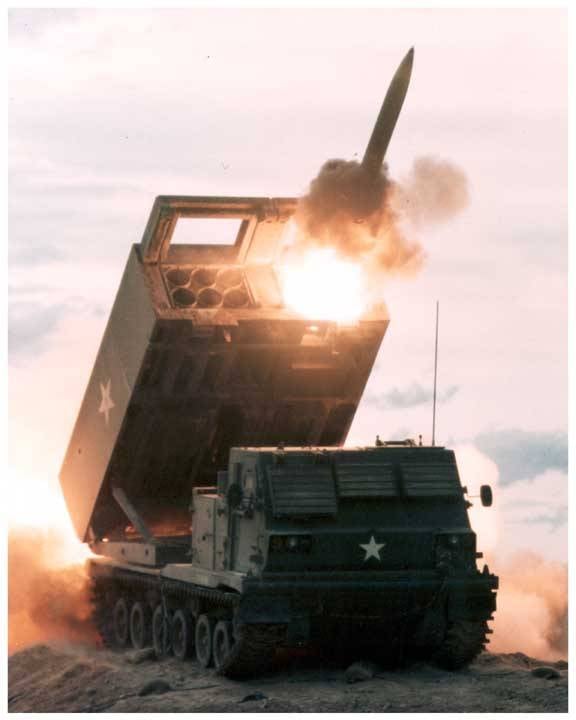
Start 227-mm unguided rocket
The M270 artillery unit receives two containers at once, which makes it possible to launch a volley of 12 mm caliber 227 missiles. After firing, the container is removed, and a new one is installed in its place.
Such a launcher architecture to a certain extent simplifies the preparation for firing, and also gives a good reserve for modernization. The M269 product has a significant internal volume, suitable for use not only TPK under 227-mm rockets. So, in the framework of this artillery unit it was possible to fit the MGM-140 ATACMS tactical missile of the 610 mm caliber.
The presence of such ammunition dramatically expanded the range of tasks of the MLRS, and also transferred it to another class of equipment. It is easy to see that a different M269 launcher architecture would not have produced similar results.
Missiles
For MLRS M270 MLRS has been developed a wide range of ammunition of various types and for various purposes. The most popular are unguided rockets with a different combat load. M26 products are designed to hit a variety of areal targets in a wide range of ranges. M27 and M28 are training ammunition with different configurations.
The M26 shells of three modifications receive a cluster head that holds up to 644 fragmentation-cumulative warheads M77 or M85. The maximum firing range in the M26 line is 45 km. Product M27 is an inert missile M26, designed to work out the loading of ammunition. The M28 training project repeats the M26 design, but carries weight simulators of combat load and smoke bombs for marking points of impact. The M28A1 training missile has a reduced firing range to 9 km.
As part of the GMLRS project, several 227 mm guided missiles were developed with different combat load options and flight characteristics. The M30 shell is equipped with a GPS with GPS guidance and carries 404 M85 submunitions. Firing range - up to 70 km. The M31 missile has a similar design, but carries a one-piece warhead. In the near future, the launch of the GMLRS-ER missiles is expected - products with a flight range of up to 150 km.
The bulk of the missiles for the M270 was developed in the United States, but several samples were created in foreign countries. So, the German AT2 missile is based on the M26 design and carries a cluster head with the same anti-tank mines. Such ammunition is intended for remote mining of the terrain. In the recent past, Israel has modernized its M270 and supplemented its ammunition with three new missiles with trajectory correction or full-fledged homing.
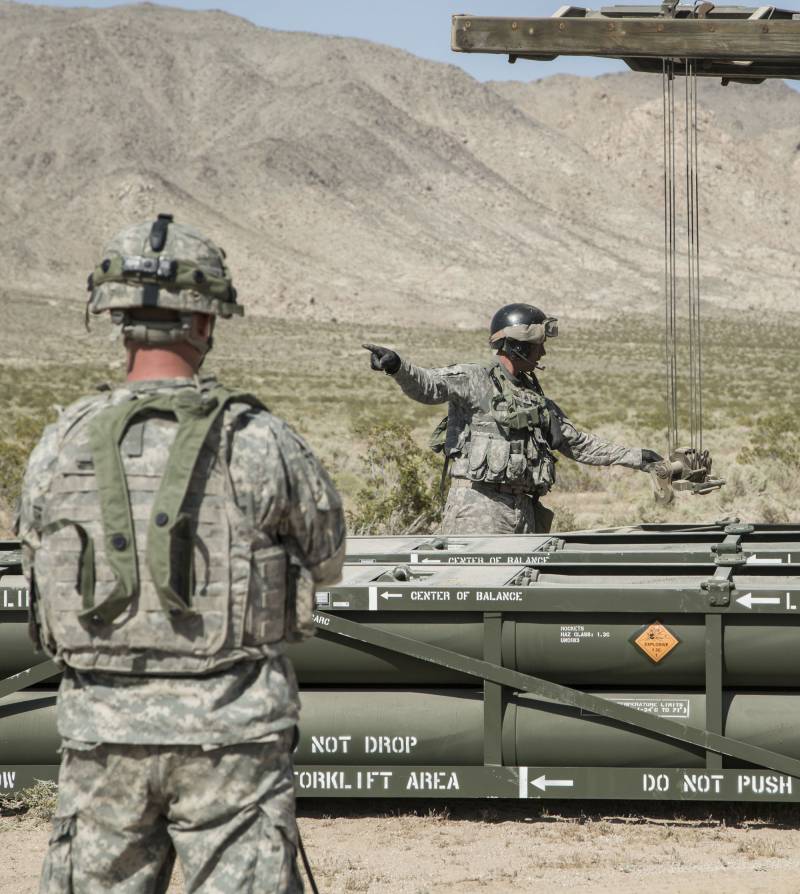
The process of loading TPK to the launch module. At the top right is the retractable frame of the lifting device
Tactical missiles
The US Army currently lacks specialized operational tactical missile systems. The functions of such equipment are assigned to the existing MLNZ M270 and M142 HIMARS. For use on the MLRS, the ATACMS family of rockets was developed. On the M269 installation, two TPKs with a similar weapons.
Products of the MGM-140 ATACMS family are guided ballistic missiles with a length of less than 4 m and a diameter of 610 mm. Starting weight, depending on version, not more than 1700 kg. Several versions of the rocket have been developed, differing in guidance, warhead and characteristics.
The first rocket of the family, MGM-140A, had an inertial navigation guidance system and delivered 950 high-explosive fragmentation elements M74 at a distance of up to 130 km. The MGM-140B project used inertial and satellite navigation. The number of submunitions was reduced to 275, which improved flight data and increased the firing range to 165 km.
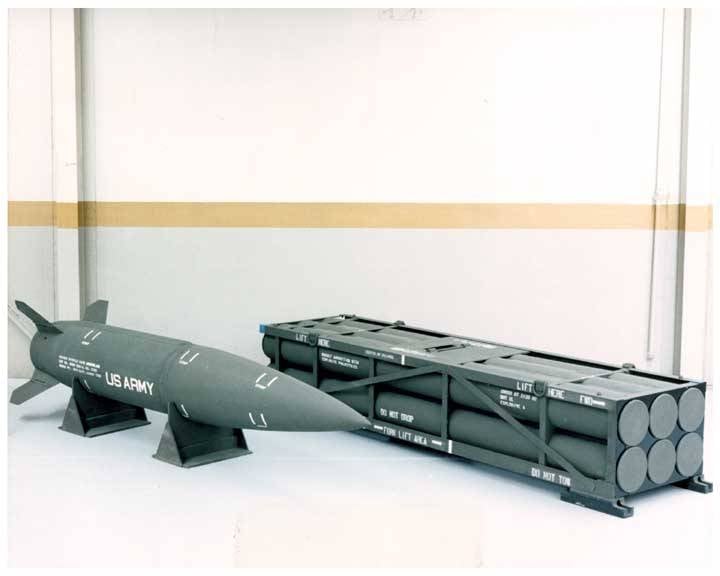
ATACMS missile (left) and TPK with 227-mm shells
The newest missile in the line is the MGM-168 (Block IVA). It carries an 227-kg unitary high-explosive fragmentation warhead and has a seeker from MGM-140B. Range brought to 270 km. New modifications were not developed. Since 2018, an ATACMS SLEP extension program has been implemented. It provides for the repair and updating of missiles in storage with the approximation of their characteristics to the MGM-168 project.
In 2016, work began on a new rocket to replace the aging ATACMS. The LPRF (Long Range Precision Fires) project provides for the creation of an operational-tactical missile with a range of up to 500 km. Due to the improvement of individual components should increase the combat load and reduce the size. In the transport and launch container for M270, two missiles should be entered at once.
In the near future, the companies Raytheon and Lockheed Martin plan to launch flight tests of a new rocket, now called PRSM (Precision Strike Missile). In connection with the US withdrawal from the INF Treaty, the possibility of processing this project with the aim of increasing the firing range is not ruled out. The 500 km specified for LPRF / PRSM were related to the limitations of this agreement, which have now expired.
According to reports, new launchers will not be developed for PRSM. Such weapons will be used on platforms in the form of MLRS M270 and M142 HIMARS.
Universal weapons
According to open data, in the US Army there are now about a thousand MLRS type M270 MLRS. About a quarter of this amount in recent years has undergone modernization under the M270A1 project, as a result of which it has improved tactical and technical characteristics. Significant quantities of such MLRS are put into reserve, but the operation of others continues.
For three and a half decades, M270 MLRS services have come a long way. Repeatedly upgraded launcher, and in parallel created modifications to existing ammunition and developed completely new ones. As a result, instead of a multiple launch rocket system with a certain range of tasks to be solved, the US Army received a multi-purpose missile system that combines the qualities of several classes of equipment.
Using M270 MLRS combat vehicles with different ammunition, the United States and other operating countries can solve different combat tasks inherent in the MLRS and OTRK. This approach is planned to be maintained in the future. To replace existing ATACMS missiles, a new PRSM model is being created.
The appearance of such weapons will again increase the combat qualities of the basic MLRS, and growth may be higher than previously expected. According to the results of recent events, the United States does not face the limitations of the INF Treaty, and the range of a promising missile may be greater than the previously announced 500 km.
The high combat potential of the M270 MLRS complex is provided by several key factors. First of all, it is a successful launcher architecture, charged with the help of unified transport and launch modules. The second factor is the constant modernization of the means and equipment of the self-propelled combat vehicle. Crucial in this is the development of new missiles for various purposes.
Despite the considerable age, MLRS M270 MLRS retains high performance, and in the near future will receive new opportunities. Thanks to this, the U.S. Army is able to continue to operate not the newest vehicles without any loss in performance. Over time, M270 will have to give way to newer developments, but so far this remains a matter of the distant future. In the coming years, the MLRS will remain in the army.
- Ryabov Kirill
- US Army, Rbase.new-factoria.ru
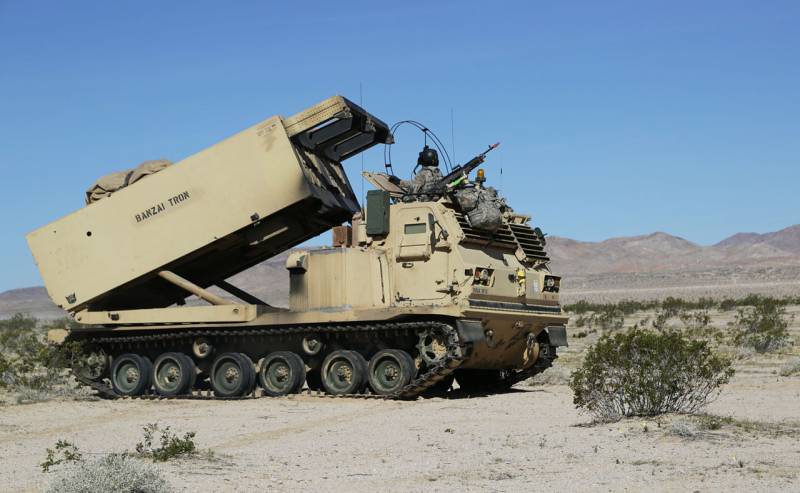
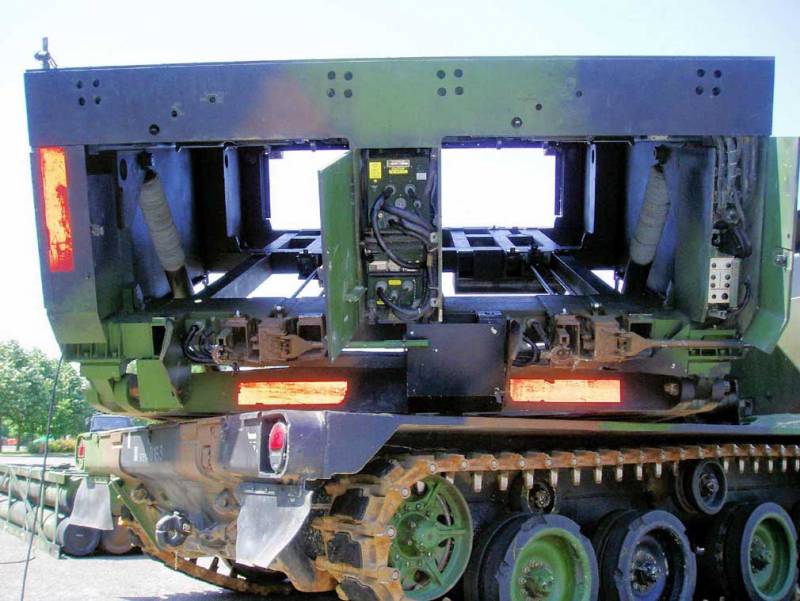
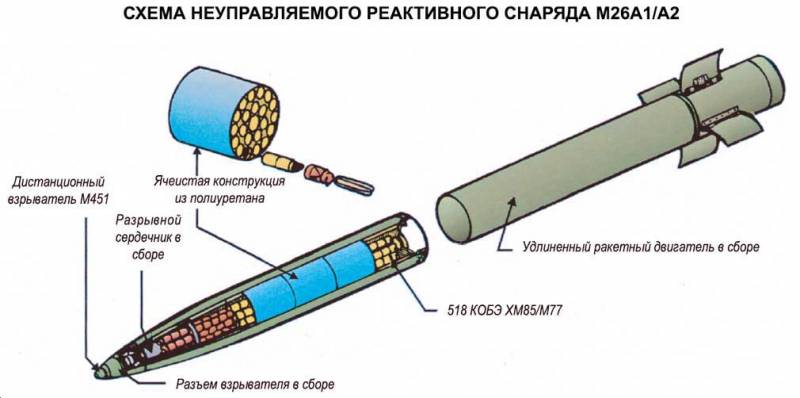
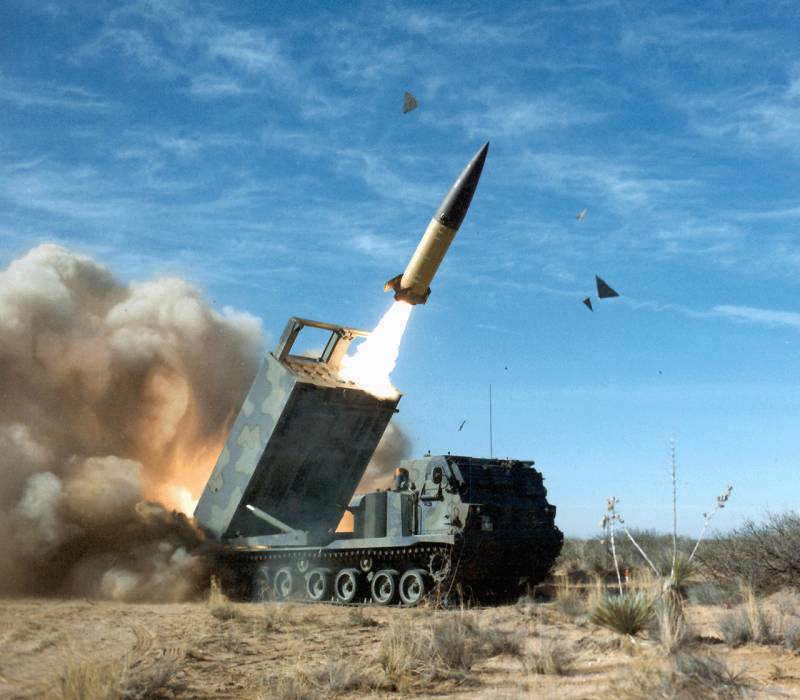
Information